Here's my understanding of the induction motor, it would be really helpful if someone can verify it.
- 3 phase AC supply given to stator, sets up an rotating magnetic field (RMF,) \$ B \$ (discussing about the magnetic field, not the MMF.)
- This RMF induces EMF in each rotor conductor (\$ e = B \, l \, v \$,) this induced EMF is in phase with the RMF that is the peak of induced EMF is always under the peak \$B\$.
- Induced EMF causes a current flow that lags the EMF and hence the RMF, due to the inductive reactance of the rotor coil. (So the maximum current-carrying conductor at any instant is always a bit behind the max EMF induced conductor.) https://www.youtube.com/watch?v=JPn5Ou-N0b0 (to understand this lag in peak current conductor)
- The force on a conductor due to RMF, \$F = I \times B = I B \sinψ\$, but \$ ψ = 90 ^{\circ}\$ always, so \$F = IB\$. (Check graph link to look at force distribution on all conductors.) If the maximum current-carrying conductor is always under the maximum \$B\$, then the average force (average of forces on all conductors) is maximum, so \$F_{avg}\$ is maximum when the maximum current-carrying conductor is under a pole, but there's always a lag as mentioned, and this lag depends on the inductive reactance which is dependent on the frequency of induced current. (Also note that inductive reactance \$X_l \,\propto \,\dfrac{1}{\cos \theta}\,\,\,\,\$). During the start, induced current frequency is \$N_s\$ (maximum possible) so \$X_l\$ is maximum which implies the lag of current is maximum and therefore \$F_{avg}\$ is low. Therefore starting torque is pretty low. (Graph for \$B, I, F, F_{avg}\$ https://www.desmos.com/calculator/hh2t1tpoxa (only for high slip operation))
- Once the machine starts running, the relative speed decreases, so the frequency of induced current decreases, and so the reactance decreases, which implies \$F_{avg}\$ increases and thus torque increases, but remember even though the \$F_{avg}\$ is affected by the lag it is primarily dependent on the magnitude of \$I\$ itself (as \$F = BI\$ is force on each conductor.) The peak \$I\$ decreases as the motor starts running as the induced emf peak magnitude decreases, but initially, the decrease in inductive reactance (and thus the reduction in lag between, peak induced EMF and peak current, (which increases the \$F_{avg}\$) overshadows the decrease in the magnitude of \$I\$, so initially \$T \propto \dfrac{1}{slip}\$ (high slip.) Once \$T_{max}\$ occurs (near s = 5 to 10%,) the effect of reduction in reactance (and increase in PF) doesn't matter much, after \$T_{max}\$ the decrease in the magnitude of current dominates, so the torque begins to fall. So \$T \propto s\$ at low slip.
